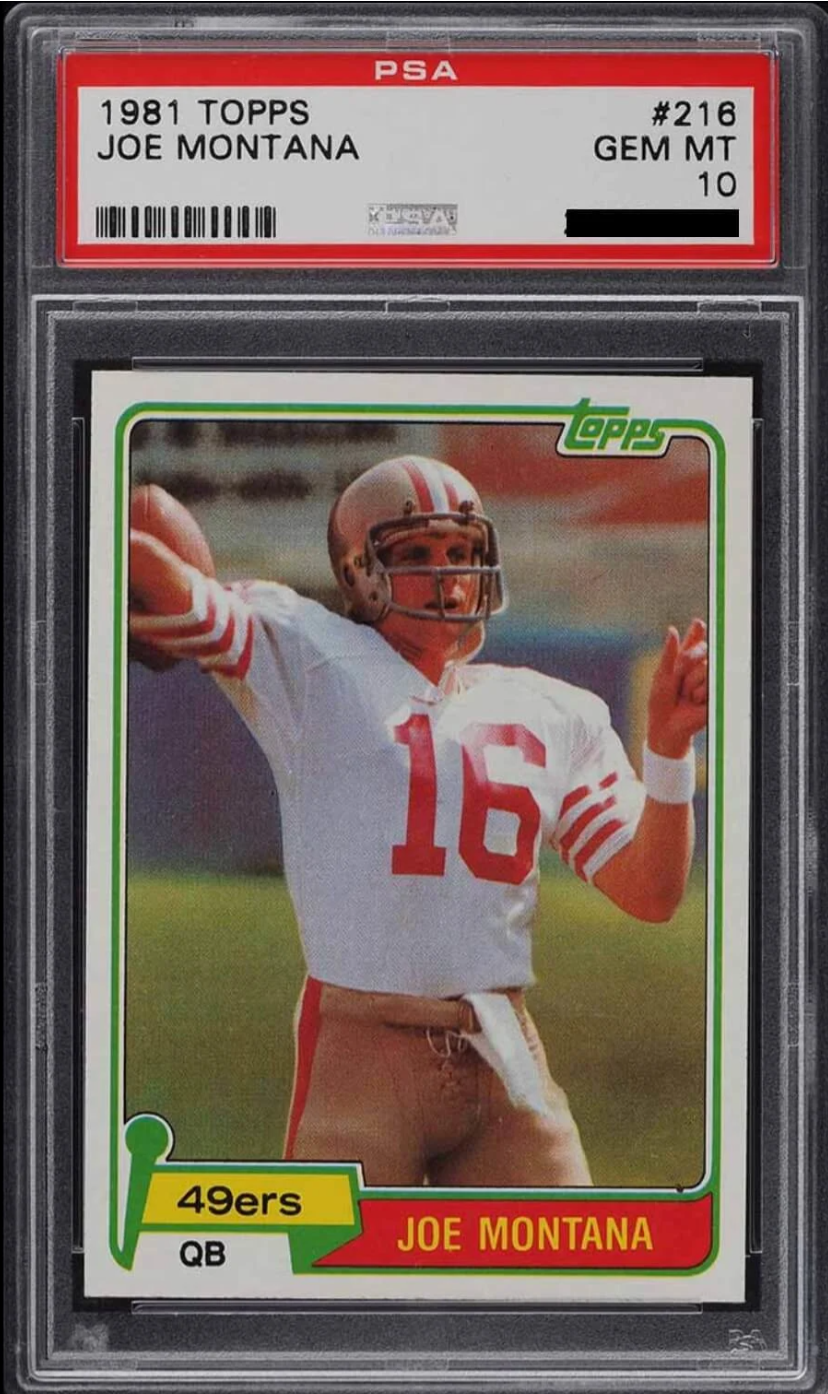As the clock ticked down on Joe Montana’s stellar career, few could have predicted that one of his most impressive plays would come long after he’d left the gridiron. Indeed, his impact on the sport is as tangible today as the rocket passes he lofted to his teammates in the ’80s. But it’s not just the annals of football history that retain his legacy; the trading card market echoes his name with increasing frequency. Montana’s 1981 Topps rookie card has proven to be more than just a nostalgic token; it’s a veritable gold mine for collectors, one whose value seems only to increase year after year.
Dubbed “Joe Cool” for his unflappable demeanor under pressure, Montana’s brilliant tenure with the San Francisco 49ers was characterized by triumph and poise. During the 1980s, he drove the team to four Super Bowl victories, solidifying his identity as a household name and a cultural icon. His rookie card encapsulates this reign, depicting him mid-throw, clad in San Francisco’s iconic red-and-gold colors—a snapshot of athletic prowess frozen in time. It’s no wonder, then, that this particular card has transcended the status of a mere collectible to become almost mythic within the football card universe.
This piece of cardboard history is graded on a meticulous scale by the Professional Sports Authenticator (PSA). Mint-condition cards, certified as PSA 10, are the creme de la creme, and there are a mere 115 of these specimens known to exist. A fact only fervently amplifying their allure. Despite being over a quarter-century removed from his final professional game, Montana’s collectible treasures continue to pique the interest of sports memorabilia enthusiasts worldwide. Four PSA 10 cards have been sold in the last three months alone, driving up the value by nearly 17%. The most recent of these pristine pieces changed hands at an eye-watering price of $48,800—a stark contrast to the comparatively paltry $4,075 a Montana PSA 10 could have been snapped up for in 2005.
Yet, mint condition isn’t the only way to leap into this market. For those with shallower pockets, PSA 9 cards—more plentiful in number at over 2,100—still present a sound investment. Selling recently for $2,035, this slightly less perfect example climbed 11% in just a few months. Now, reminisce back to 2010, when the price tag stood around $300; talk about a growth of 578% over 15 years. Clearly, the Montana phenomenon refuses to plateau.
A step further down the ladder, but still in highly respectable collectible territory, are PSA 8 cards. Nearly 10,000 of these exist, yet even they carry significant clout. Recent transactions have seen them sold between $290 and $431, though there’s a minor decrease of 5% in the past three months—a mere blip in an otherwise upward trajectory.
Why this persistent fascination? Montana’s legacy and influence, of course, reverberate beyond his statistical prowess on the field. It’s about the artistry of his play, the composure with which he handled criticism, and the victories that spun legends. Each card is a portal to moments that transcended sport, and for collectors, they act as talismans of greatness that only grow in mythical proportion with time.
For both seasoned collectors who recall Montana’s feats play-by-play and newer fans diving into the sport’s rich past, his 1981 Topps remains a symbol captured in cardboard form, a tangible relic of an era of football marked by one man’s substantial shadow. As long as sports continue to worship at the altar of greatness, Joe Montana’s rookie card will hold its place at the helm of revered collectibles.
Indeed, the card market is an unpredictable arena, often as capricious as the games it celebrates. Still, for someone like Joe Montana—the embodiment of cool, under pressure and adept at turning the improbable into the inevitable—one might surmise that he always had the foresight that his card would become a lasting staple too. Joe Montana retired the game, but his name, his throw, and that memorable card carry on, accruing not just dust and age, but value beyond measure.

